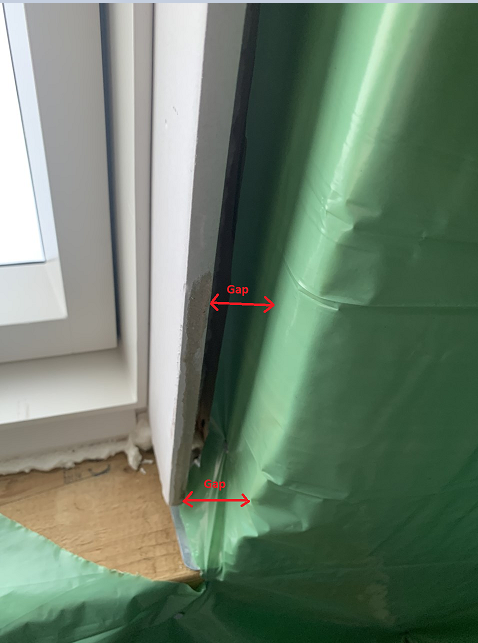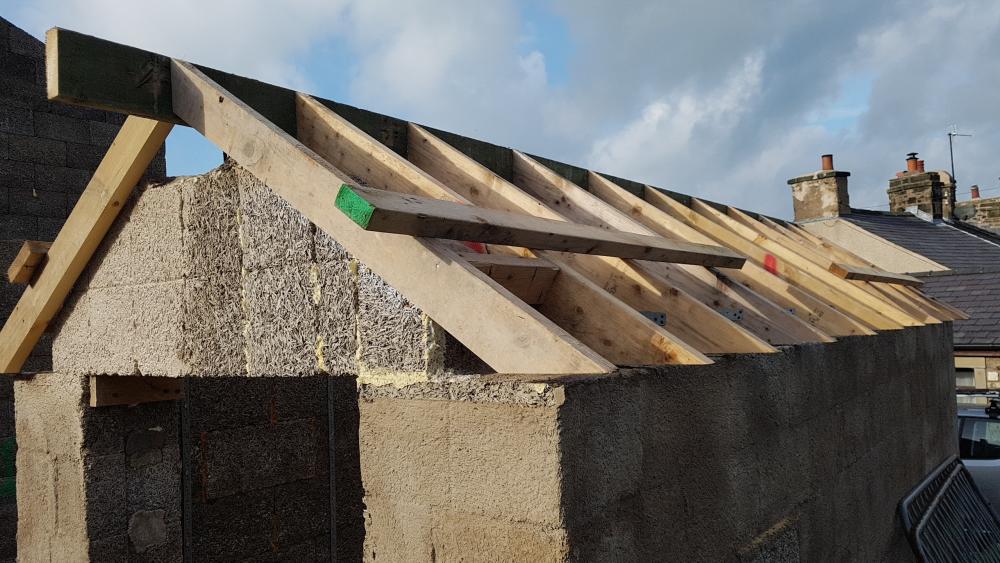Search the Community
Showing results for tags 'battens'.
-
Hi all, I'm trying to work out how to plasterboard the inside of my Fakro roof windows. There is a groove around the inside of the window frame which I believe the plasterboard sits in, but that would leave a gap of around 25mm behind the plasterboard, between the plasterboard and the timber rafter. Also, the plasterboard coming out from the window would be at an angle meeting the ceiling plasterboard, unless I maintain the gap. How is this usually done? Do I need to batten out the gap between the plasterboard and timber rafter? This seems like a very fiddle job if so, as the gap in not consistent along the length of the window... Any help would be much appreciated! Cheers
- 19 replies
-
- plasterboard
- drywall
-
(and 3 more)
Tagged with:
-
The job I have been putting off! Dropped all the old lath ceilings in our house reno last year. Nows the time to think about putting them back up. Problem is the floor and ceiling joists are all over the place. A builder recomended battening the ceiling perpendicular to the joists and packing them out to get them level but I am not sure what size of batten to use and if rough sawn would be acceptable. Would be looking at 12.5mm plasterboard at a minimum. Any advice much appreciated.
-
Currently I'm trying to nail down (pun intended) some of my choices while we are for planning permission on our design. Rural property in Scotland (so it's wet and windy), which will be SIPS or TF. It will most likely be some from of slate effect concrete tile, like marley edgemere or something or similar mainly due to cost considerations (See more below). I had done a lot of reading and made some notes to ensure the build up detail was correct and had marked down to allow for counterbattens and then battens so as to let water drain etc. Which made perfect sense and seems to be a logical choice. This was until 2 days ago when i came across this blog entry by @Thedreamer which has no battens and the slates go directly into the sarking. Which has completely confused me now. So back to the point of this thread....when to use battens/ counterbattens / and when you need to?? As a side note - I found the above thread when searching about Cupa 3 heavy slates as I would like a slate roof - but from quick searches over the past few months it seems as though it's considerably more expensive. But I am struggling to quantify this at the moment as I can't seem to find the right info while searching - so if anyone has any good links to notable thread or has previously done a cost comparison then that would be much appreciated also. thanks
-
I'm a wee bit perplexed regarding battens to use to attach my external timber cladding to. Battens to be 47 x 50 mm, horizontal cladding 120 x 20 mm. The question revolves around treated timber. I already have some treated battens on site which are yellow in colour. A different supplier's battens are green. Is there any difference between colours/which to use?
-
I'd like to make the battens for this roof. I have lots (60 linear meters ) of 4 by 3 and a load of 4 by 2. Most of it is reasonably straight. It's treated. I have a circular saw. You can see where this is going can't you? I'm doing my very best to reduce the additional costs of having to shutter my Durisol blocks during the last two pours by re-using the stock that was needed to build the shuttering. What should I treat the newly cut battens with?
-
I will be using a Parex render on moisture resistant backer board (weight 27kg per 8x4 sheet). I have conflicting advice telling me that 25 x 50mm battens will be suitable using stainless steel screws 6.0 x 90mm spaced every 500 mm from timber frame supplier. Parex say 25 x 50mm battens are a minimum and would prefer 38 x 63mm battens using 5.0 x 75mm s/'s screws spaced every 150mm. This would give a fixing of 25mm into the actual timber frame after a 38mm batten and 10mm panel vent board. So the thinner batten has a larger screw with wider spacings and thicker batten shorter screws with less spacing between screws. What have other people used for their battening? Parex say the larger batten is kiln dried and more stable but trying to keep it dry before render is applied will not be easy. TIA
- 3 replies
-
- battens
- stainless screws
-
(and 1 more)
Tagged with:



